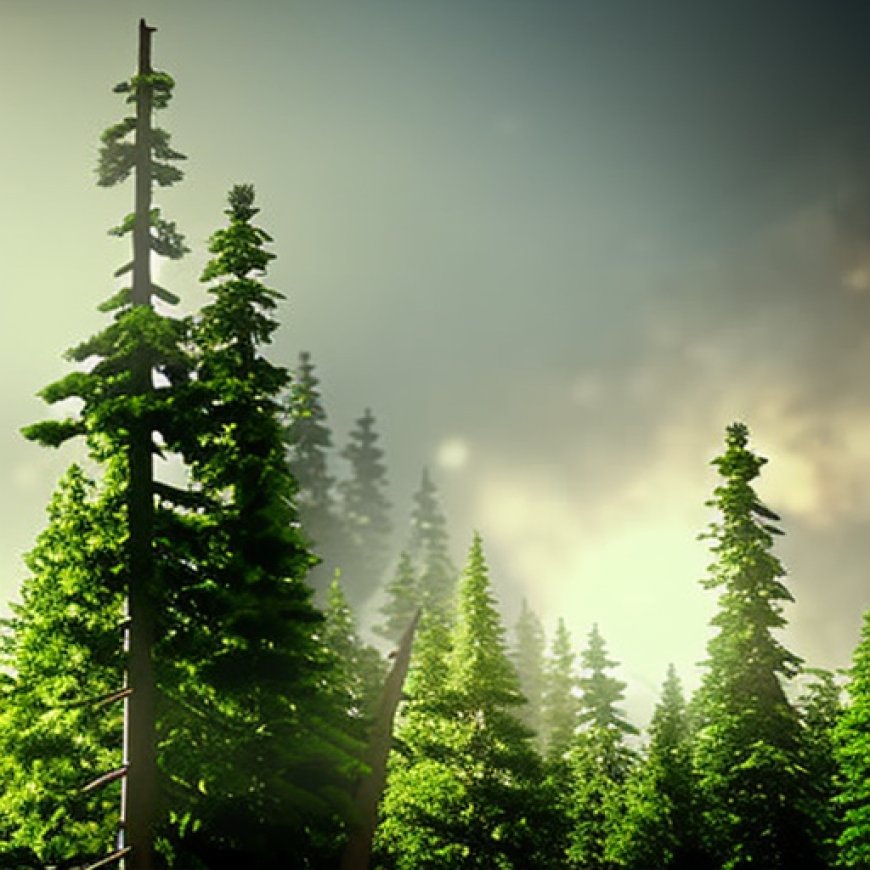US Forest Service proposes protections for old-growth trees, without an outright logging ban


The Biden Administration’s Plan to Preserve Old-Growth Trees in National Forests
The Biden administration has published its proposed plan for preserving old-growth trees in national forests across the country, opening another opportunity for public input on conserving ancient trees.
The proposal, presented in a draft environmental analysis on Friday, outlines ways national forests should prioritize preserving old-growth trees, but it falls short of an outright ban on logging.
Environmental Groups Call for Stronger Measures
“This draft is a step, but the final policy must be significantly improved, including ending the practice of sending old-growth trees to timber mills,” several environmental groups, including the nonprofit Oregon Wild, said in a jointly issued statement.
Oregon Wild forest program manager Lauren Anderson called the proposal a good first step, but said it leaves too much up to individual forest managers, with loopholes allowing them to continue logging the country’s remaining ancient trees.
“There are very, very few reasons these days to cut down an old-growth tree,” Anderson told OPB. “Like if there’s an old-growth tree that’s threatening a popular recreation area or trail, that’s a reason to do it. But beyond that, there are very limited cases where it makes sense.”
Balancing Preservation and Wildfire Protection
Officials told the Associated Press that a sweeping ban on logging old-growth would make it harder to thin forests to protect communities against wildfires that have grown more severe as the planet warms.
“To ensure the longevity of old-growth forests, we’re going to have to take proactive management to protect against wildfire and insects and disease,” Forest Service Deputy Chief Chris French said.
Thinning forests — often called “proactive management” — can mean different things to different people, argued Portland-based attorney Susan Jane Brown, who is helping develop a similar proposal for Northwest forests. For some forests, logging small-diameter trees ahead of prescribed burns is necessary, a consensus reached by many tribes and scientists.
“But you can take it too far,” Brown said. “That’s where some of the concern arises, is how much is enough and how much is too much. And in many places, that is in the eye of the beholder.”
The proposal doesn’t address whether some forests should be left alone without any thinning. Brown considers that a shortfall, particularly for moist forests west of the Cascades.
“Letting those forests continue to age and get older and more decadent,” Brown said. “That’s what the wildlife need them to do.”
Local Forest Plan Changes Still Underway
The proposal is also linked to ongoing work to update the Northwest Forest Plan, which is undergoing its own transformation. That’s the plan that came out of the Pacific Northwest timber wars of the 1980s and ‘90s. It set aside 7.4 million acres in Oregon, Washington, and California as protected reserves and banned clearcutting tree stands that were more than 80 years old within those reserves.
Brown is a member of an advisory committee developing recommendations for what that Northwest Forest Plan update could look like. She said changes to national U.S. Forest Service policies won’t heavily impact their work.
“The national amendment specifically recognizes and calls out the Northwest Forest Plan amendment as an ongoing process that should be consistent,” Brown said. “We’re just going to be more specific.”
Brown said many of the original Northwest Forest Plan protections for endangered species like the northern spotted owl and the marbled murrelet will remain in place. However, changes in the works will likely include new parameters for logging in some areas. She expects a draft proposal to publish in August.
Meanwhile, forests east of the Cascades could be in for even bigger changes with the Blue Mountains Forest Plan revision. That revision work is still in its early stages.
Old-Growth Protections Do Not Include BLM Lands
Old-growth forest protections proposed Friday will apply to trees on public lands managed by the Forest Service, but not to the Bureau of Land Management. BLM has come under fire recently for logging old-growth trees in Oregon.
BLM responded to Biden’s order through its public lands rule approved in April, which nods to the benefits of old-growth trees.
Similar to the Forest Service’s proposed amendment, BLM’s rule was met with mixed emotions, with some conservationists saying it lacks teeth and some timber industry representatives saying it’s too restrictive.
“It was a good first step,” Anderson, of Oregon Wild, said. “But in terms of actually delivering on the directive of the executive order, it did not do that.”
Anderson said she hopes the bureau comes out with additional protections for old-growth trees, though it’s unclear if it will.
Protesters have organized rallies and tree-sit protests recently to prevent BLM from logging old-growth trees. Brown, Anderson, and other conservation groups say the BLM is logging too heavily under the guise of protecting forests from wildfires and diseases.
The Associated Press contributed to this report.
Source: opb.org








